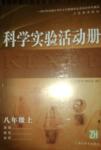题目内容
【题目】Urbanization
Until relatively recently, the vast majority of human beings lived and died without ever seeing a city. The first city was probably founded no more than 5,500 years ago. 【1】 In fact, nearly everyone lived on farms or in tiny rural (乡村的) villages. It was not until the 20th century that Great Britain became the first urban society in history — a society in which the majority of people live in cities and do not farm for a living.
Britain was only the beginning. 【2】 The process of urbanization — the migration (迁徙) of people from the countryside to the city — was the result of modernization, which has rapidly transformed how people live and where they live.
In 1900, fewer than 40% of Americans lived in urban areas. Today, over 82% of Americans live in cities. Only about 2% live on farms. 【3】
Large cities were impossible until agriculture became industrialized. Even in advanced agricultural societies, it took about ninetyfive people on farms to feed five people in cities. 【4】 Until modern times, those living in cities were mainly the ruling elite (精英) and the servants, laborers and professionals who served them. Cities survived by taxing farmers and were limited in size by the amount of surplus food that the rural population produced and by the ability to move this surplus from farm to city.
Over the past two centuries, the Industrial Revolution has broken this balance between the city and the country. 【5】 Today, instead of needing ninetyfive farmers to feed five city people, one American farmer is able to feed more than a hundred nonfarmers.
A.That kept cities very small.
B.The rest live in small towns.
C. The effects of urban living on people should be considered.
D. Soon many other industrial nations became urban societies.
E.But even 200 years ago, only a few people could live in cities.
F.Modernization drew people to the cities and made farmers more productive.
G.Modern cities have destroyed social relations and the health of human beings.
【答案】
【1】E
【2】D
【3】B
【4】A
【5】F
【解析】
本文是一篇说明文,主要介绍了城市化的进程以及早期制约城市化进程的主要原因。
【1】根据横线后一句“In fact, nearly everyone lived on farms or in tiny rural (乡村的) villages.”可知几乎所有人都生活在农场或小乡村里,很少有人生活在城市里。E项“But even 200 years ago, only a few people could live in cities.”与上下文一致,故选E项。
【2】横线前一句“Britain was only the beginning.”告诉我们英国只是城市化的开始,英国以后有更多的国家进入了城市化的进程。D项“Soon many other industrial nations became urban societies”与之一致。故选D项。
【3】横线前两句Today, over 82% of Americans live in cities. Only about 2% live on farms.可知现在大部分的美国人都生活在城市里,只有百分之二的人生活在农村里。其余人生活在小镇里。B项“The rest live in small towns.”与上下文语境一致,故选B项正确。
【4】横线前句“Even in advanced agricultural societies, it took about ninetyfive people on farms to feed five people in cities.”告诉我们95个农民才可以养活5个城里人。生产效率的低下制约了城市规模,导致以前的城市规模较小。故A项符合上下文语境。
【5】横线前一句“Over the past two centuries, the Industrial Revolution has broken this balance between the city and the country.”告诉我们工业化打破了城市和乡村的界限,提高了农业的生产效率,也让更多的人进入城市。故F项符合上下文语境。

 科学实验活动册系列答案
科学实验活动册系列答案【题目】现在越来越多的女士加入了减肥大军,最近你们班就此事展开了讨论。60%的同学赞成,40%的反对。请你写一篇英语短文,短文应包括下表中的内容:
赞成 | 反对 |
1.使人身材苗条、漂亮 | 1.浪费时间、精力和钱 |
2.正确减肥有利于身体健康 | 2.吃减肥药会损坏身体健康 |
3.坚持减肥有助于锻炼人的意志 | 3.过分看重减肥的人往往缺乏自信 |
你对它的看法(内容由考生自己拟定) | |
注意:1.对所给要点,不要简单翻译,要有适当发挥;
2.词数100词左右。
参考词汇:毅力perseverance;看重take sth. seriously
_______________________________________________________________________________
_______________________________________________________________________________
_______________________________________________________________________________
_______________________________________________________________________________
_______________________________________________________________________________
_______________________________________________________________________________
_______________________________________________________________________________
_______________________________________________________________________________
_________________________________________________________